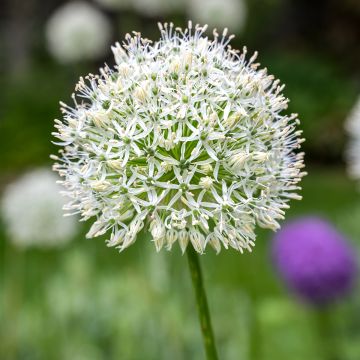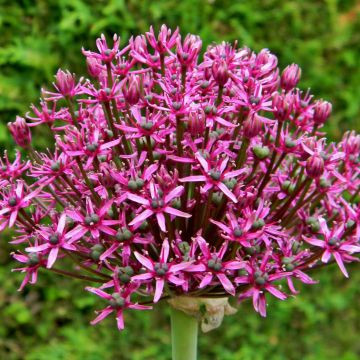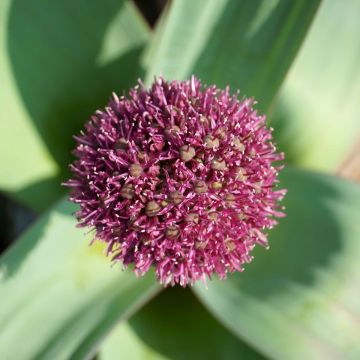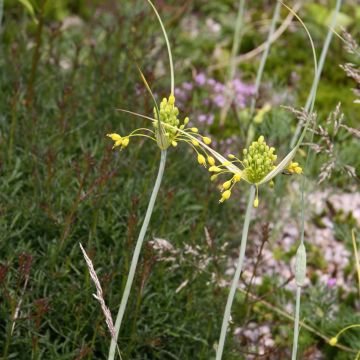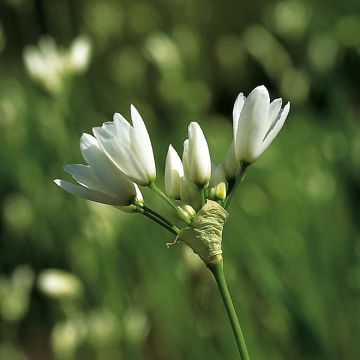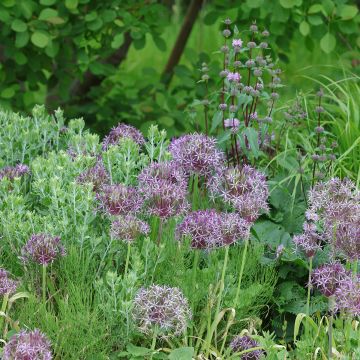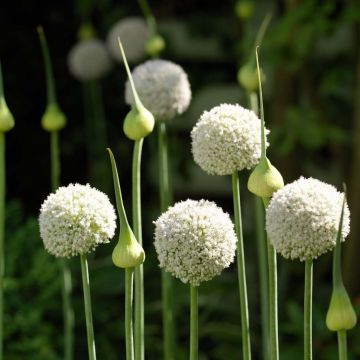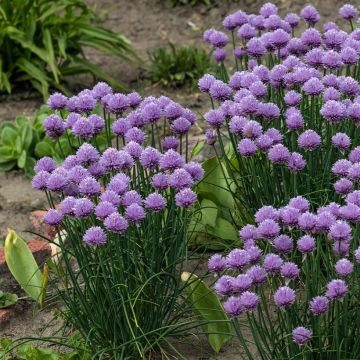Shipping country and language
Your country of residence may be:
Your country of residence is:
For a better user experience on our website, you can select:
Your shipping country:
Andorra
Austria
Belgium
Bulgaria
Canada
Chile
Croatia
Cyprus
Czechia
Denmark
Estonia
Finland
France
Germany
Greece
Hungary
Iceland
Ireland
Italy
Latvia
Lithuania
Luxembourg
Malta
Monaco
Netherlands
Poland
Portugal
Romania
Slovakia
Slovenia
Spain
Sweden
Switzerland
United Kingdom
We only deliver seed and bulb products to your country. If you add other products to your basket, they cannot be shipped.
Language:
French
German
Spanish
English
My Account
Hello
My wish lists
Plantfit
Log in / Register
Existing customer?
New customer?
Create an account to track your orders, access our customer service and, if you wish, make the most of our upcoming offers.
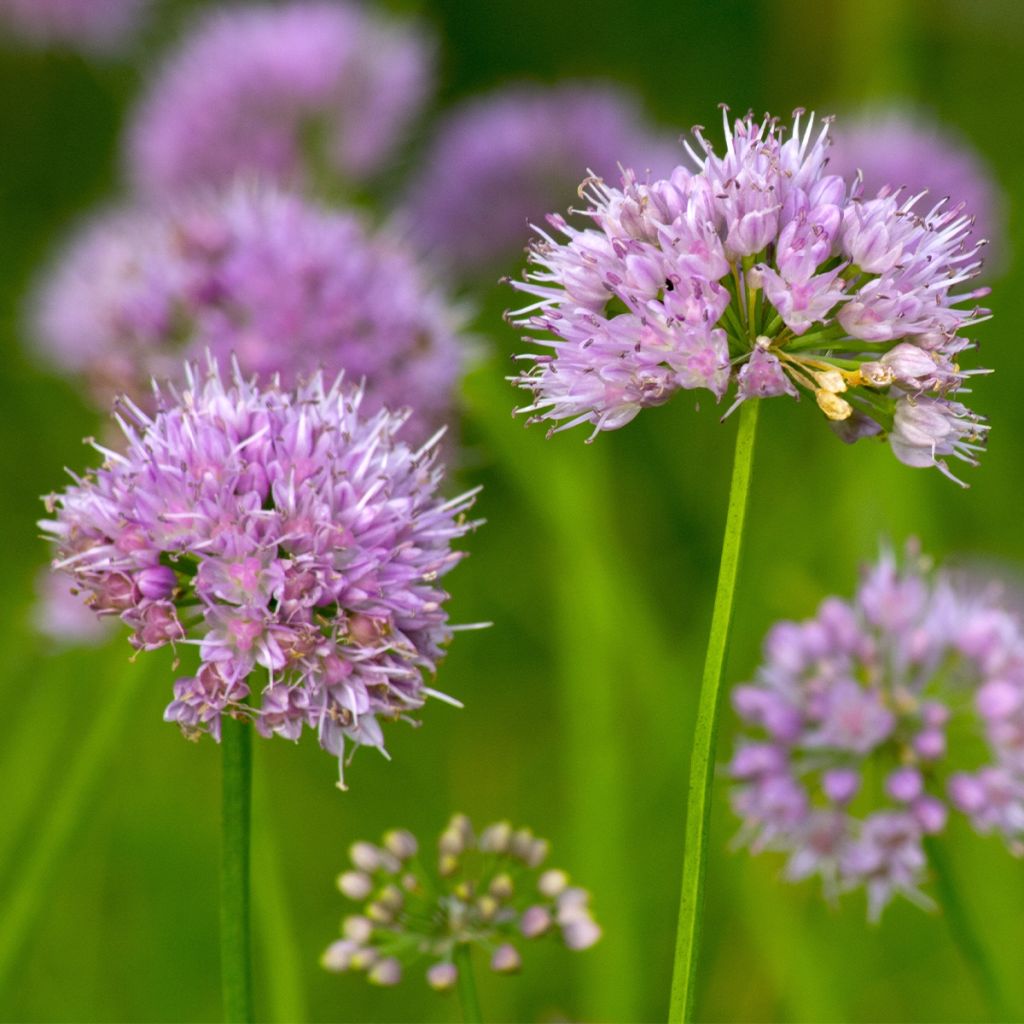

Allium carolinianum Rosy Dream - Ail d'ornement
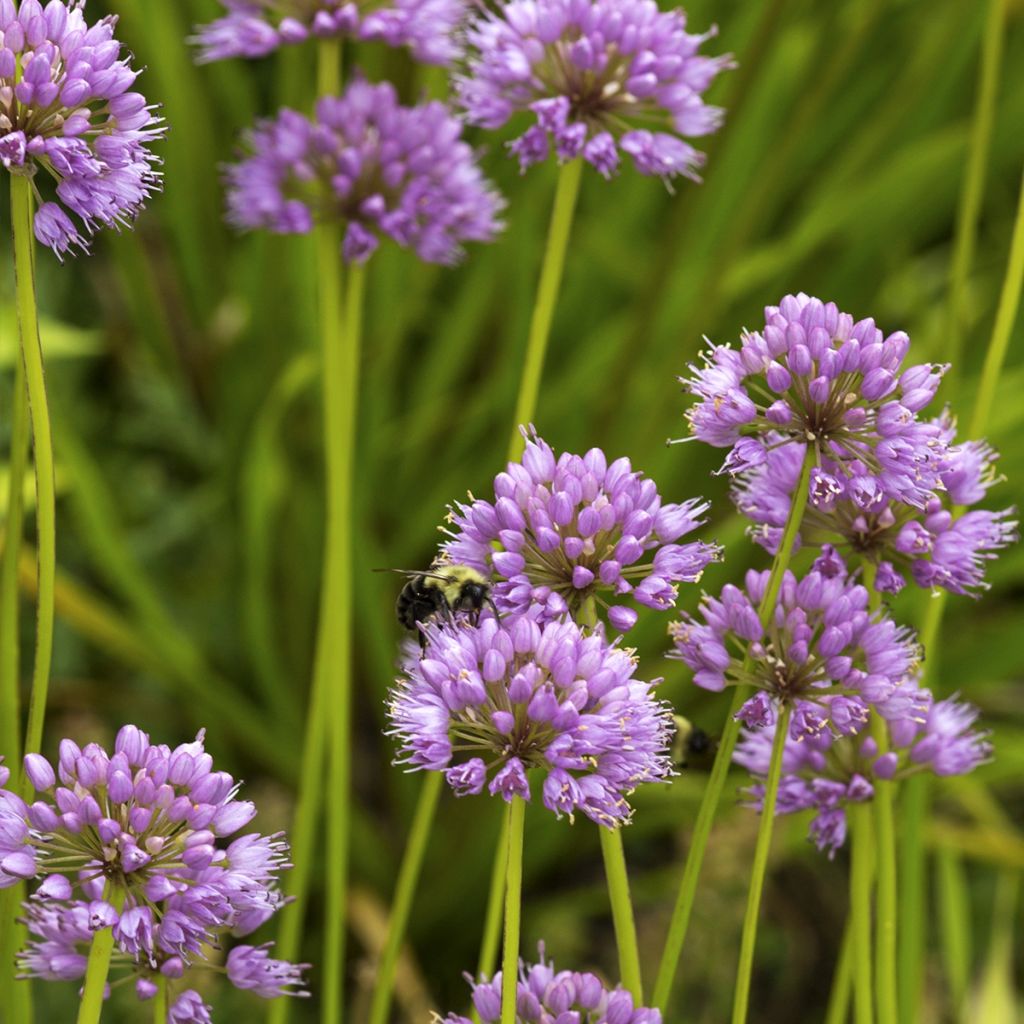

Allium carolinianum Rosy Dream - Ail d'ornement
Allium carolinianum Rosy Dream
Allium carolinianum Rosy Dream
Caroline onion, Meadow garlic, Ornamental Onion
Several empty bulbs...
Thierry, 19/12/2023
Order in the next for dispatch today!
Dispatch by letter from €3.90.
Delivery charge from €5.90 Oversize package delivery charge from €6.90.
More information
This item is not available in your country.
Schedule delivery date,
and select date in basket
This plant carries a 6 months recovery warranty
More information
We guarantee the quality of our plants for a full growing cycle, and will replace at our expense any plant that fails to recover under normal climatic and planting conditions.
From €5.90 for pickup delivery and €6.90 for home delivery
Express home delivery from €8.90.
Does this plant fit my garden?
Set up your Plantfit profile →
Description
Allium carolinianum 'Rosy Dream' is an interesting variety of ornamental garlic due to its low height, vigour, and its abundant, almost fluffy, pink-mauve flowering in dense pompoms. It is a decorative bulbous plant, hardy and easy to grow, which blooms in summer. Its medium-sized inflorescences have a great impact in rustic or romantic borders, rockeries, and flower pots. Provide it with a sunny exposure and well-drained soil, and it will form beautiful dense clumps over time.
Allium carolinianum is a wild garlic native to the mountains of Central and Southern Asia (Himalayas), where it grows on sunny slopes up to 5000m (16404ft) altitude. Like all alliums, it belongs to the large Amaryllidaceae family. The 'Rosy Dream' cultivar has been selected for its more compact habit and pinker flowers. It develops from a small egg-shaped bulb measuring up to 2.5cm (1in) in diameter. Each bulb produces remarkable foliage that is ribbon-like, quite wide, very thick, and with a waxy texture. It is particularly decorative when it emerges from the ground at the end of winter. In July-August (sometimes as early as June in mild climates), a floral stem emerges from the bulb, slightly taller than the foliage, about 40cm (16in) high, with a solid and sturdy appearance. At the top of this stem, there is an almost spherical inflorescence of about 5cm (2in) in diameter, composed of about 100 flowers. Each small flower has 6 pink-mauve petals. The foliage usually dries out just before or at the beginning of flowering. A hot and not too humid summer, as well as a dry winter, are guarantees of success for the cultivation of this somewhat capricious plant, which seems, however, quite hardy.
Allium 'Rosy Dream' is not one of the easiest to grow, but it will delight amateur gardeners who love rare and beautiful plants. It works wonders in raised beds, rockeries, or borders (in well-drained soil). It can also be grown in pots to enjoy its beautiful flowering on a balcony or patio. Plant it in groups of 5 that you can slip between low ornamental grasses or among low-growing plants such as perennial geraniums, catmints, or agastaches, for example. It can also accompany ground-cover roses and bellflowers in a small romantic bed.
Small vegetable garden tip: plant some ornamental garlic in the middle of strawberries to protect them from fungal diseases; they will add a few pleasant blooms that are sometimes lacking among vegetables.
Allium carolinianum Rosy Dream in pictures
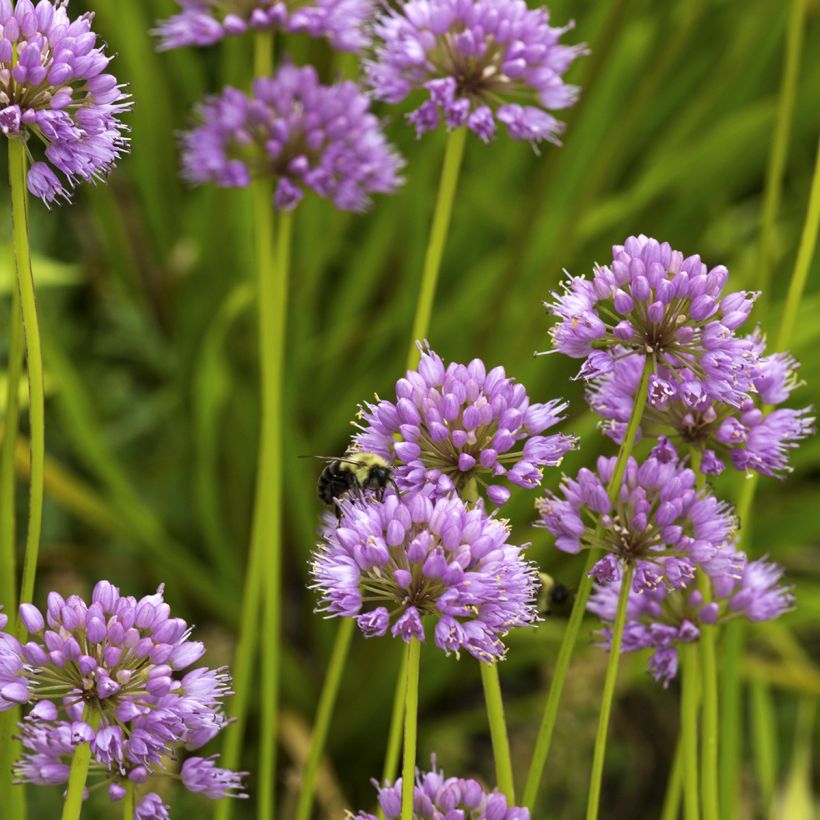

Plant habit
Flowering
Foliage
Botanical data
Allium
carolinianum
Rosy Dream
Alliaceae - Liliaceae
Caroline onion, Meadow garlic, Ornamental Onion
Himalayas
Other Allium
Planting and care
Allium 'Rosy Dream' appreciates well-drained, even rocky, soil that is rather dry after flowering and in winter. Plant it on a bank, in a rockery, or at the edge of a slightly elevated flower bed. Soil with a tendency towards limestone is appreciated. It thrives in a very sunny position. Preferably plant it during the summer resting period, before the end of October, so that it has time to establish itself well. Alliums fear winter humidity and waterlogged soil. Plant the bulbs at a depth of 6 or 8cm (2 or 3in), spaced 20cm (8in) apart. Its cold resistance is good as long as the soil does not retain water in winter. Snow provides a good natural blanket cover for the plant.
Planting period
Intended location
Care
- , onOrder confirmed
Reply from on Promesse de fleurs
Haven't found what you were looking for?
Hardiness is the lowest winter temperature a plant can endure without suffering serious damage or even dying. However, hardiness is affected by location (a sheltered area, such as a patio), protection (winter cover) and soil type (hardiness is improved by well-drained soil).

Photo Sharing Terms & Conditions
In order to encourage gardeners to interact and share their experiences, Promesse de fleurs offers various media enabling content to be uploaded onto its Site - in particular via the ‘Photo sharing’ module.
The User agrees to refrain from:
- Posting any content that is illegal, prejudicial, insulting, racist, inciteful to hatred, revisionist, contrary to public decency, that infringes on privacy or on the privacy rights of third parties, in particular the publicity rights of persons and goods, intellectual property rights, or the right to privacy.
- Submitting content on behalf of a third party;
- Impersonate the identity of a third party and/or publish any personal information about a third party;
In general, the User undertakes to refrain from any unethical behaviour.
All Content (in particular text, comments, files, images, photos, videos, creative works, etc.), which may be subject to property or intellectual property rights, image or other private rights, shall remain the property of the User, subject to the limited rights granted by the terms of the licence granted by Promesse de fleurs as stated below. Users are at liberty to publish or not to publish such Content on the Site, notably via the ‘Photo Sharing’ facility, and accept that this Content shall be made public and freely accessible, notably on the Internet.
Users further acknowledge, undertake to have ,and guarantee that they hold all necessary rights and permissions to publish such material on the Site, in particular with regard to the legislation in force pertaining to any privacy, property, intellectual property, image, or contractual rights, or rights of any other nature. By publishing such Content on the Site, Users acknowledge accepting full liability as publishers of the Content within the meaning of the law, and grant Promesse de fleurs, free of charge, an inclusive, worldwide licence for the said Content for the entire duration of its publication, including all reproduction, representation, up/downloading, displaying, performing, transmission, and storage rights.
Users also grant permission for their name to be linked to the Content and accept that this link may not always be made available.
By engaging in posting material, Users consent to their Content becoming automatically accessible on the Internet, in particular on other sites and/or blogs and/or web pages of the Promesse de fleurs site, including in particular social pages and the Promesse de fleurs catalogue.
Users may secure the removal of entrusted content free of charge by issuing a simple request via our contact form.
The flowering period indicated on our website applies to countries and regions located in USDA zone 8 (France, the United Kingdom, Ireland, the Netherlands, etc.)
It will vary according to where you live:
- In zones 9 to 10 (Italy, Spain, Greece, etc.), flowering will occur about 2 to 4 weeks earlier.
- In zones 6 to 7 (Germany, Poland, Slovenia, and lower mountainous regions), flowering will be delayed by 2 to 3 weeks.
- In zone 5 (Central Europe, Scandinavia), blooming will be delayed by 3 to 5 weeks.
In temperate climates, pruning of spring-flowering shrubs (forsythia, spireas, etc.) should be done just after flowering.
Pruning of summer-flowering shrubs (Indian Lilac, Perovskia, etc.) can be done in winter or spring.
In cold regions as well as with frost-sensitive plants, avoid pruning too early when severe frosts may still occur.
The planting period indicated on our website applies to countries and regions located in USDA zone 8 (France, United Kingdom, Ireland, Netherlands).
It will vary according to where you live:
- In Mediterranean zones (Marseille, Madrid, Milan, etc.), autumn and winter are the best planting periods.
- In continental zones (Strasbourg, Munich, Vienna, etc.), delay planting by 2 to 3 weeks in spring and bring it forward by 2 to 4 weeks in autumn.
- In mountainous regions (the Alps, Pyrenees, Carpathians, etc.), it is best to plant in late spring (May-June) or late summer (August-September).
The harvesting period indicated on our website applies to countries and regions in USDA zone 8 (France, England, Ireland, the Netherlands).
In colder areas (Scandinavia, Poland, Austria...) fruit and vegetable harvests are likely to be delayed by 3-4 weeks.
In warmer areas (Italy, Spain, Greece, etc.), harvesting will probably take place earlier, depending on weather conditions.
The sowing periods indicated on our website apply to countries and regions within USDA Zone 8 (France, UK, Ireland, Netherlands).
In colder areas (Scandinavia, Poland, Austria...), delay any outdoor sowing by 3-4 weeks, or sow under glass.
In warmer climes (Italy, Spain, Greece, etc.), bring outdoor sowing forward by a few weeks.
